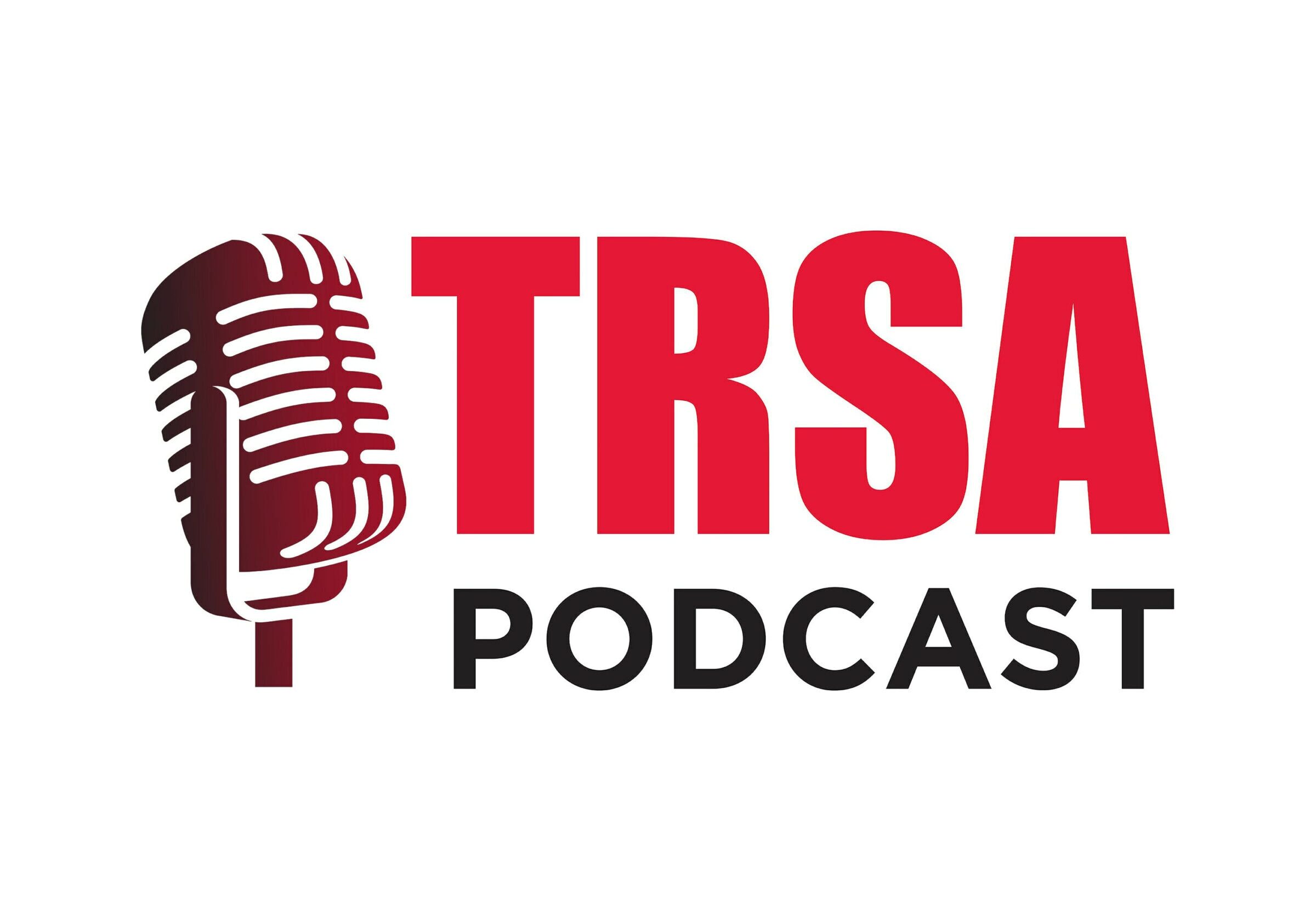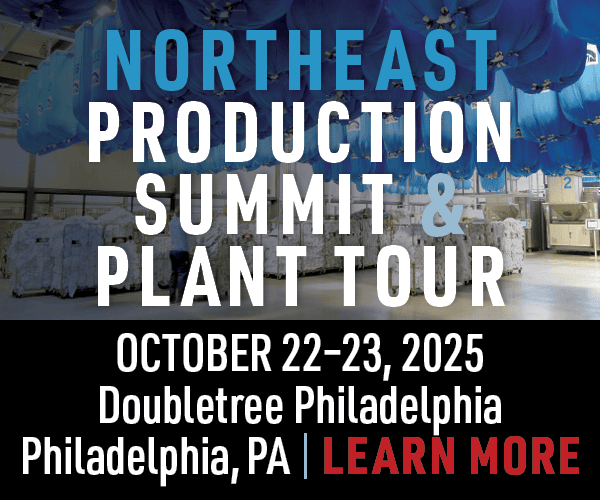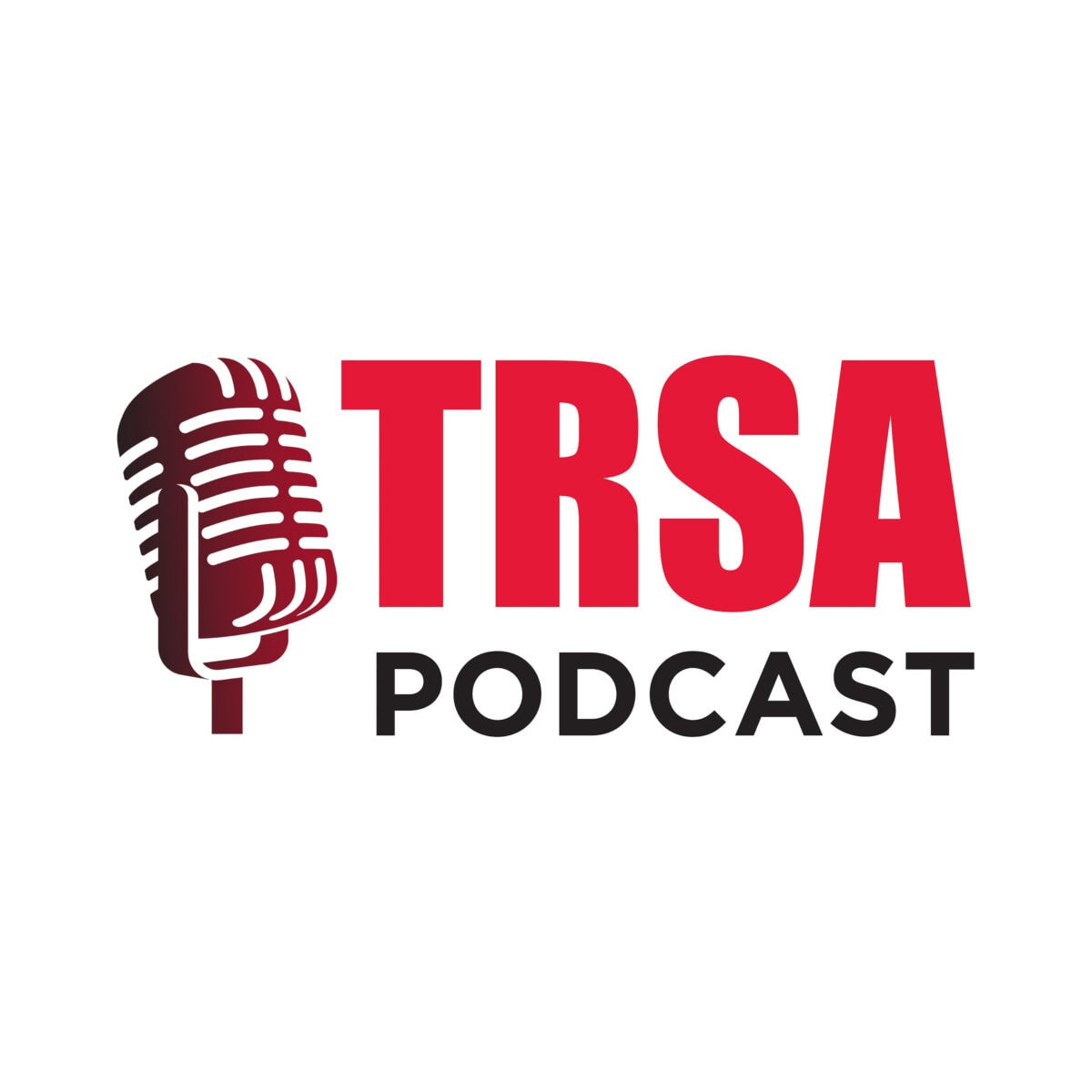Casey Mackert, Director of Baldrige Services at Six Disciplines, joins us to discuss the pillars of performance excellence and how following these methods can help your operation achieve its goals. She explains how not having these pillars in place is like running with scissors – potentially dangerous to your organization’s well being.
Welcome to the TRSA podcast. Providing interviews and insights from the linen, uniform, and facility services industry. Most Americans might not realize it, but they benefit at least once per week from the cleanliness and safety of laundered, reusable linens, uniforms, towels, mats, and other products provided by various businesses and organizations. TRSA represents the companies that supply, launder, and maintain linens and uniforms. And in this podcast, we will bring the thought leaders of the industry to you.
Welcome back to another episode of the Linen Uniform and Facility Services podcast sponsored by 6 Disciplines Consulting Services. I’m your host, Jason Risley. And on today’s episode, we’ll discuss performance excellence and how strategic thinking can help your laundry operation perform at a higher level. Joining us on the show to discuss performance excellence is Casey Mackert, the director of Baldridge Services at 6 Disciplines. Casey joined 6 Disciplines in 2013 and is responsible for the integration of performance excellence principles in the areas of leadership, customer service, strategy, operations, measurement, and results.
She’s also responsible for developing, implementing, and executing strategy for 6 Disciplines clients. Before joining the team at 6 Disciplines, she served as the executive director of the Partnership For Excellence, leading the state level Baldridge program for Ohio, Indiana, and West Virginia. This is Jason Risley. I’m here with Casey Mackert of 6 disciplines consulting services. We’re talking about performance excellence today.
We have a lot to go through, so let’s get right into it. Okay. See, we hear the term performance excellence used frequently. What does performance excellence mean to you as a quality professional? Well, first, thanks, Jason, for having me.
I guess from the 10,000 foot view, performance excellence means having an integrated approach to organizational performance management that results in 3 key things. Most importantly, results in better service to customers in the sense of providing value, which, of course promotes organizational stability. 2nd, it it helps identify key work processes and make sure they’re well defined and aligned. For example, the pack out process, the check-in process, or the profitability by account process. And then lastly, it’s really helping leaders lead, making sure that learning and improvement, including innovation, are embedded into the culture of the organization, which helps leaders attain customer satisfaction and retention and then ultimately increase profitability.
The real question really is not what performance excellence is, but how an organization can accomplish it. And the great thing is it does not matter if the organization has 1 employee or 1,000. Once an organization understands how and embeds the importance of excellence into their culture, they build a sustainability model that will withstand 6 Disciplines likes to say that leaders are running 6 disciplines likes to say that leaders are running with scissors. You just told me a lot. So focusing on the how, how does 6 d take performance excellence from 10,000 feet to practical application?
Well, Jason, we believe that in order to work toward performance excellence in any organization, be it in the laundry industry or health care or education or or any other sector, the organization needs to be focused on and coached in 4 key areas. Number 1 is leadership. A culture of performance excellence will never be achieved if leaders do not engage in and insist on excellence from each and every employee. Secondly, strategy, both development of strategy and execution of strategy, including important key measures. 3rd, those processes.
And then finally, a customer focus. Importantly, understanding the difference between satisfaction and engagement of customers and how to accomplish both. So how would an organization get started? With any organization, we begin our work with our clients by asking key questions about their organization. We we like to call them easy hard questions.
Things like, who are your customers? What do they expect from you? How do you know? Questions about workforce and culture, questions about what the organization’s core competencies are. Core competencies are those things that you’re better at than your competition that you have measurably exceptional results in, questions about how they choose data, especially competitive data and how they use it.
And then finally, key strategy questions, such as what key strategic challenges and advantages they have identified and how they factor those advantages and challenges into planning and execution. And I know these questions may sound kinda silly. They’re so easy. Right? Well, not so much.
I’ve had some incredible conversations about each of these, probably the most robust around who the customer is. Let me tell you a quick story if I can. Mid America Transplant is a high performing organ procurement organization that’s located in Saint Louis. And for years, they had built a business model on the belief that their customers were donors, recipients, and families. What they were finding is that their key work processes they rethought their customer and they determined it was actually a physician who was a recipient of the organs they recovered.
That robust distribution process. And they’re now the highest and they built a robust distribution process. And they’re now the highest performing organ procurement organization in the United States, all because of that discussion on the customer. So you can see how important that is. So once an organization has answers to these key questions, we can start working with those clients on the 4 areas we talked about just a few minutes ago.
And and using that scissors analogy again, you know, how in the world can a leader start running toward their vision without these important questions answered? It’s really difficult. Let’s break down these 4 areas and talk about specifics starting with leadership. As a coach, how do you work with clients to, as you say, build a culture of performance excellence? Yeah.
As I mentioned, leadership is key. So we begin by determining how well mission, vision, and values are embedded into the culture. So there’s that how word again. How equals process, a reliable, repeatable, sustainable, and measurable way to do something. And we’ll talk more about process itself in a little bit.
Leaders should have processes for effective communication to all stakeholders, a process for deploying mission, vision, and values to create culture. An example of this is a tool we use called the core values rubric. We help clients define their values, and we build key questions for organizational and self reflection. This tool has been used, by our clients for hiring, discipline, team building, and a host of other activities. Leaders should also have good process for interacting directly with the customers.
In these leadership processes, all of them should be systematic and intentional. How about strategy? Well, good strategy should be first and foremost to serve the customer. It should leverage an organization’s core competencies and address strategic challenges and advantages. It should also consider capability and capacity of workforce.
It should enhance competitiveness as well. And once we help an organization build strategy, we make sure there are initiatives and action plans built to support its accomplishment. Deployment and execution and strategy are key as is making sure all employees understand their role in accomplishing the work of the organization. Again, how we do this, having a process in place is is critical. Let me tell you another quick story if I can.
It’s about a dishwasher. Several years ago, I was an examiner for a performance excellence organization looking at a large health care system. And I was on-site to determine if their strategic planning process was fully deployed. And it’s important to note that this was a health care system with 30,000 employees, so it was really big. Senior leaders said that I could talk to anyone in the organization, and they would know mission, vision, and values, and how their job was connected to it.
So I worked my way through senior leadership and directors and departments, and and they were right. Everybody knew. So I decided to go out and visit with the dishwasher in a remote location in the health system in the middle of the night. These site visits tend to be 24 hour adventures. So this dishwasher pulled out a personal goal card, and he explained to me how he set goals with his manager.
He he walked me over to a bulletin board, and he showed me metrics and said, this is how we know if we’re doing a good job. And then before I left, he said, I just want you to know that I come here every day, and I I help save lives. And and that was part of their mission statement. And so here’s a man as far away from direct patient care as you could prop possibly get. Probably never saw people, and yet he was firmly connected to that health care’s mission.
And that’s what 6 d wants for all of our clients, which is why I tell that story. We want an organization where every employee understands that they’re an important part of accomplishing mission and vision no matter what they do. And that’s how organizations are truly successful. So that dishwasher story ends with him showing me metrics and these metrics are also a critical gauge in assessing organizational health. We teach the balanced scorecard methodology, making sure there are key measures in finance process, customers and workforce.
That’s what a balanced scorecard is. And the truth is if your organization is healthy in these four areas, you will ultimately be successful. Can you talk more about key work processes? Doesn’t every organization know what they do and how they do it? Well, no, they don’t actually.
Some of the most robust and animated discussions I’ve had with clients have been around what key services or products they provide and how they deliver them. First, we define keyword processes as those processes that are vital to an organization success and that are reliable, repeatable, sustainable, and measurable. If you look at all the things you do, how how do you decide what’s key? There’s so many things. And so let me give you an example from health care.
Hospitals have literally thousands of processes, all of which are vitally important. But what are the key things that they do? They create access so that people can get health care. They provide high quality care while patients are there, and then they transition patients. Three key things.
So once you determine that framework, you can begin fitting all that you do into those buckets and managing processes becomes much more efficient. I I always love that simple as hard quote from Steve Jobs because simple is hard. It’s really hard to decide what’s key. So once we have those key processes identified, we help clients map them and identify key outcome measures. These measures should appear on scorecard.
And our clients have been that have been on a performance excellence journey for a while have identified 100 of processes, mapped many of them, and build systematic process improvement into what they do, and we can help with that too. You mentioned innovation and improvement earlier. Some of our listeners may use the term continuous improvement instead of performance excellence. Are they the same or are they different? And what is your definition of innovation?
So continuous improvement versus performance excellence. That’s a great question. And they are different, but they need to be thought of together. So continuous improvement is a key part of performance excellence. It it means always looking to be better.
The question again is how. Organizations must have reliable, repeatable, sustainable, and measurable ways to improve processes, and they need to be intentional and systematic. Performance excellence is a result of this focus on continuous improvement and as we discussed to focus on customers and leadership. I have a client I work with whose founder back in the mid 1800 told his son to take what you find here and make it better and better, and it’s become one of their mantras. And and that to me is the absolute best definition of continuous improvement that that I’ve ever heard.
Innovation has 2 key depth definitions. Many people think about sharp tanks and light bulbs when they hear innovation, new and exciting never before processes or products. And this can be true and is one definition of innovation. The other ways to just define innovation is to innovate existing processes and improve them. And we help organizations develop innovation models.
So again, there’s a how or process to innovate and an intention to innovate. Many organizations use the word innovation and say it’s important, but they have no idea how to make innovation work with their team. And and this is a key area where running with scissors just come and making decisions both, tactical and strategic without all of the information. Finally, and perhaps most importantly, customer focus. Let’s talk about what that means and how you help clients.
So going back to those key and critical questions that we started with, this continues to be one of the most animated discussions that I have with clients. Determining customers is hard. If we use the definition of customers as current and potential users of our products, programs, and services, as well as those who are immediate purchasers that use it as part of what we do, for example, distributors, it begins to get complicated. Identifying customers is the first step, then we determine what they expect from us. And one of their key reasons organizations fail is so simple.
Is because they don’t listen to customers either because they don’t have a way to do it or because they don’t listen frequently enough. Or if they do listen, they don’t use what they learn to develop strategy or create work processes. Having a systematic process for using customer feedback and strategy development and key work process development is critical. Knowing which customer wants is critical too. I’d I’d ask you to think for a moment about companies like Apple that that really have this nailed.
The average Apple customer could care less about the technology they’re buying. They want an image or a lifestyle. Think about the last Apple commercial you saw. They they showcase famous and cool people using their products, incredible photos of carefree boomers, exotic travel, millennials in coffee shops, snapping selfies on mountains. Not one word about technology, speed, size, nothing.
They’ve listened so well. They know what we want and and we buy it from them. So determining satisfaction versus engagement is another focus area. Think about satisfaction as transactional, a creates repeat business. It causes creates repeat business.
It causes customers to recommend and support your organization. Customer engagement is key to any organization success, and we have great discussions with clients about the difference between satisfaction engagement and building processes to not only engage, but then to measure that engagement and continuously improve those relationships. Many of our listeners know 6 d as their trusted strategy and execution coaches. Why this new performance excellence focus? Has the organization changed?
Well, we’ll always be strategy and execution coaches that will not change. But like we coach our clients, what our customers need and expect from us changes over time, and we need to listen to them and incorporate what we learn into our own strategy and service offerings. What we’re hearing from our clients in all sectors is they want a more holistic approach to managing their organizations. And our coaches have been incorporating many of the things that we’ve discussed today into their strategic planning and execution for a very long time. But what we’ve learned through our own strategic planning process is that we could address what our customers need through the diverse capabilities that our coaches have and by putting it together in a more formal way, offering what we do as performance excellence coaching.
And our coaches’ skill sets match the 4 components we believe produce performance excellence. I’d I’d like to think that that this is a good example of innovation that we were discussing just a minute ago. So we have touched on so many things today. What would be the key takeaway that you would like our listeners to have? I think that in order to achieve long term success in organizational health, leaders must look holistically with a systems perspective at their organization and develop a performance excellence road map.
Having good people is not enough. Having good strategy is not enough. Not knowing or not leveraging your core competencies can cause failure. Visionary leaders take those 4 areas of performance excellence that we discussed today, and they develop robust processes and then they execute. And and even if they’re already wildly successful, they know they can always be better and leave a clearer path for those that follow.
And and most importantly, they they no longer run with scissors. Thanks for joining us today on the podcast, Casey. How can our listeners reach out if they want more information on performance excellence? Well, first of all, thanks for having us. It was our pleasure, and we would love to hear from them.
They can contact us through 6dconsulting.com, which is our website, or they can also contact us through our president, Eric Kurjan at e kurjan@6dconsulting.com. If you’d like to share your thoughts on today’s episode, send us a message at podcasts attrsa.org. That’s podcasts attrsa.org. Thanks again to our sponsor, 6 Disciplines Consulting Services. And please subscribe, rate, and review our show on Apple Itunes, Google Podcasts, and Stitcher.
Additionally, don’t forget to follow TRSA on Facebook, Instagram, LinkedIn, and Twitter.
Publish Date
February 16, 2021
Runtime
19 min
Categories
Sign Up For Our Newsletter
Receive the latest updates on the linen, uniform and facility services industry from TRSA delivered straight to your inbox.









